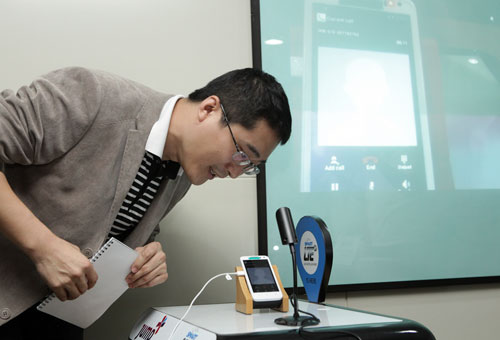Met with the folks from StarMobile the other day when they gave me two of their newest Android smartphones. The StarMobile Astra was the one that got most of my attention because it’s an Android TV phone.
The phone has been around since October and has gotten a lot of attention for a couple of reasons.

The StarMobile Astra is a combination of an Android smartphone with pretty decent hardware configuration running ICS. It has a 4.3-inch IPS display, a dual-SIM functionality with both SIM slots able to connect to 3G networks separately and comes with a built-in analog TV tuner.
All that for a pretty interesting retail price of Php6,990.

Out of the box, the Astra reminds us of the old Desire series under HTC line-up from years back. It’s got a dark brown tone with a matte finish (they tell me a white version is coming out), a little curvy around the edges and has that solid look and feel with a bit of heft.

The 4.3-inch IPS LCD they used on the Astra looks very good. The colors are bright and crisp which compensates for the slightly low resolution (~240ppi).
The stock ICS they placed here doesn’t have any custom UI although I noticed that the icons are similar to the ones in my Asus Padfone.

If you look at the complete specs of the handset below, you’ll definitely agree that the price point put on this device is a strong challenger even if you don’t consider the TV tuner feature.
StarMobile Astra specs:
4.3-inch IPS display @ 800×480 pixels, 240ppi
MediaTek MT6577 1.0GHz dual-core Cortex-A9
PowerVR SGX 531
512MB RAM
4GB internal storage
up to 32GB via microSD (8GB included)
3G/HSPA, dual-SIM, dual standby
WiFi 802.11 b/g/n
Bluetooth 2.0
GPS w/ aGPS support
8MP rear camera w/ dual-LED flash
VGA front-facing camera
TV Tuner (analog)
Li-Ion 1500mAh battery
Android 4.0.4 Ice Cream Sandwich
We also ran a couple of benchmarks on the device and got the following results — 5,722 (Antutu Benchmark) and 2,680 (Quadrant Standard). They aren’t really that impressive but the numbers are decent and could really pass as a typical result of a mid-range handset.

The TV Tuner is analog so don’t expect good quality reception from over-the-air channels. The TV antenna extends from a hidden slot at the bottom left side of the handset. What you can appreciate from this set up is that you have a large display for viewing your favorite local TV shows (I think the Astra has one of the biggest TV screens, if not the biggest, on any smartphone).
For a suggested retail price of Php6,990, it is worth considering. It has actually been my 4th handset I bring around but use it to watch TV on the road.
****** A word from the fine folks of Sun Cellular ******
Sun Cellular launches BlackBerry Prepaid!
Get the Sun BlackBerry All Day 50 for all-day unlimited mobile internet, unlimited social networking, unlimited instant messaging, unlimited BlackBerry browsing and unlimited BBM for only Php50.
Follow @suncelltweets for more info.
The post StarMobile Astra dual-SIM Android ICS TV hands-on appeared first on YugaTech | Philippines, Tech News & Reviews.

